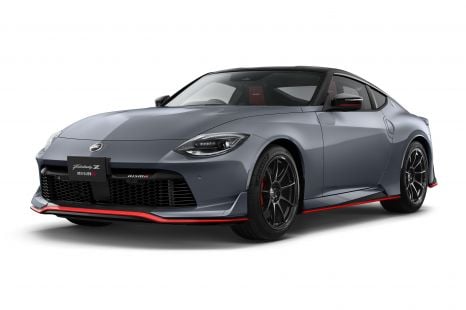

Derek Fung
Nissan Z Nismo manual revealed, facelift timing confirmed
2 Days Ago
The new-generation C-Class has put comfort and tech to the forefront, making it something of a baby S-Class limo.
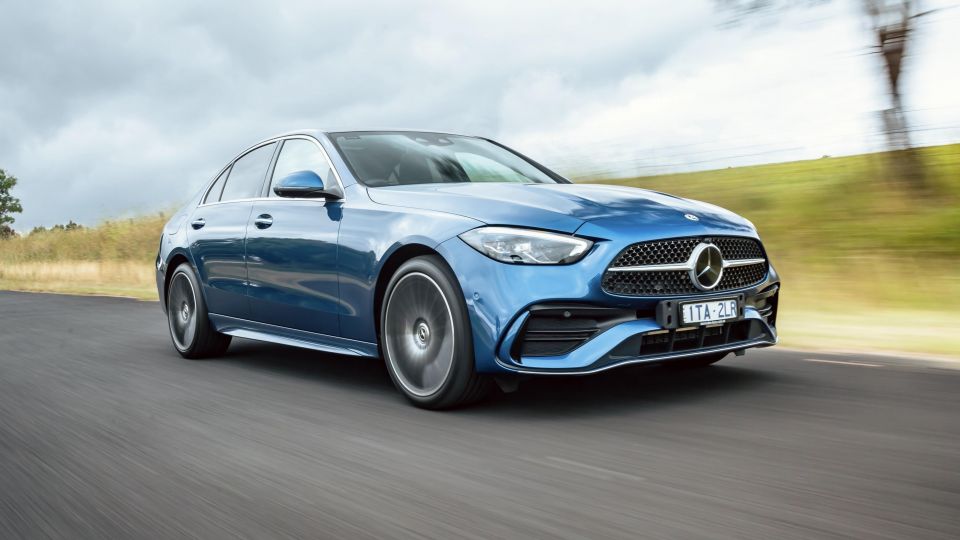


Quickly see how this car stacks up against its competition. Select any benchmark to see more details.
Where expert car reviews meet expert car buying – CarExpert gives you trusted advice, personalised service and real savings on your next new car.
The outgoing Mercedes-Benz C-Class was Australia’s top-selling luxury car over its lifecycle, although in recent times the BMW 3 Series has had its measure.
Which means the launch of a new ‘W206’ generation – pushed to 2022 due to semiconductor shortagesplaying havoc with supply – is enormously important for the company.
It seems that Mercedes-Benz has a clearer idea of what it wants the C to be this time around. Namely, a shrunken S-Class that puts occupant comfort and plushness front-and-centre.
“The letters C and S sit at opposite ends of the alphabet. However, in our portfolio they’re now moving closer together,” reckons Mercedes-Benz global CEO Ola Källenius.

While the redesign is evolutionary, in other areas else it’s more revolutionary: headlined by a modular platform shared in part with said S-Class, cutting-edge displays, and mildly-electrified drivetrains.
The launch range for Australia comprises the entry C200 and C300 grades, with only sedan bodies available. Apparently demand for wagons in Australia is too low to justify bring them.
The hotted-up Mercedes-AMG versions will come later, with the C43 expected before the (four-cylinder plug-in hybrid) C63, plus the delayed C350e plug-in hybrid (PHEV).
Let’s take a detailed look.
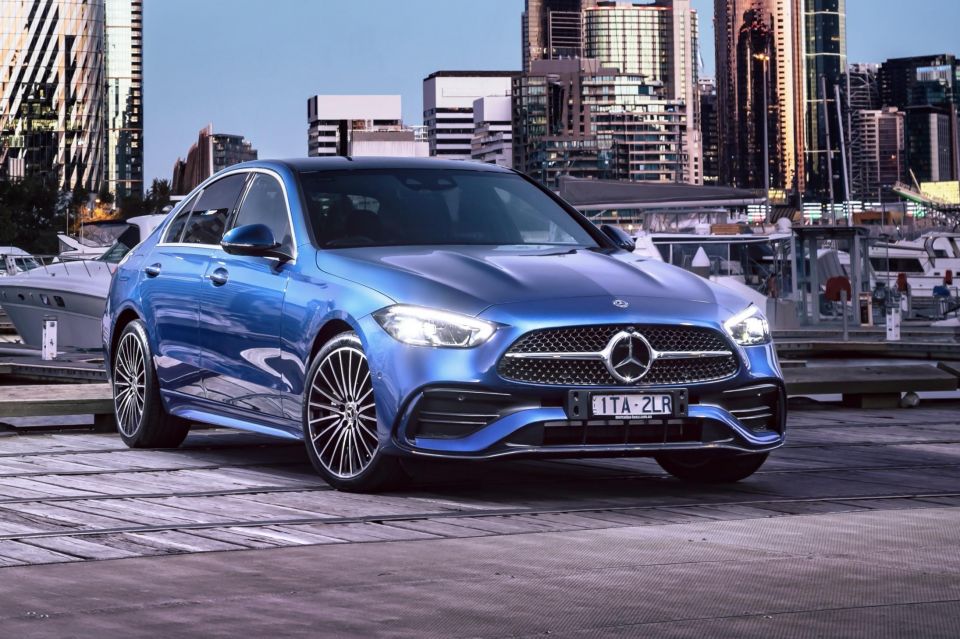
This price includes GST and luxury car tax (LCT) if applicable, but excludes on-road costs
Mercedes-Benz has set prices, with no haggling available. More on that here.
These prices are a fair bit higher than when the previous-generation C-Class launched in 2014, when the C200 cost $60,900. Mercedes-Benz counters by pointing to copious added standard features.
By contrast, a BMW 320i kicks off at $70,000.
MORE: 2022 Mercedes-Benz C-Class price and specs
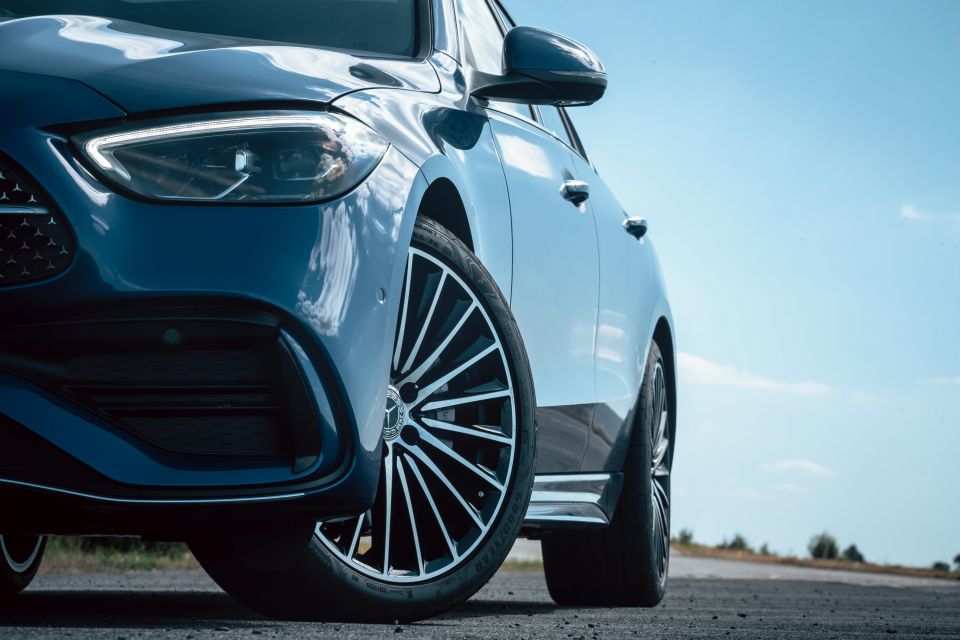

Buy your new car without the stress. It's fast, simple and completely free.

Great service from Travis and team, second time I have used this business would not hesitate to recommend them to anyone
Craig C.
Purchased a Ford Ranger in Sunshine Coast, QLD
CarExpert helped Craig save thousands on his Ford Ranger, now let us save you on your next new car.
Find a dealThe C200 comes with:
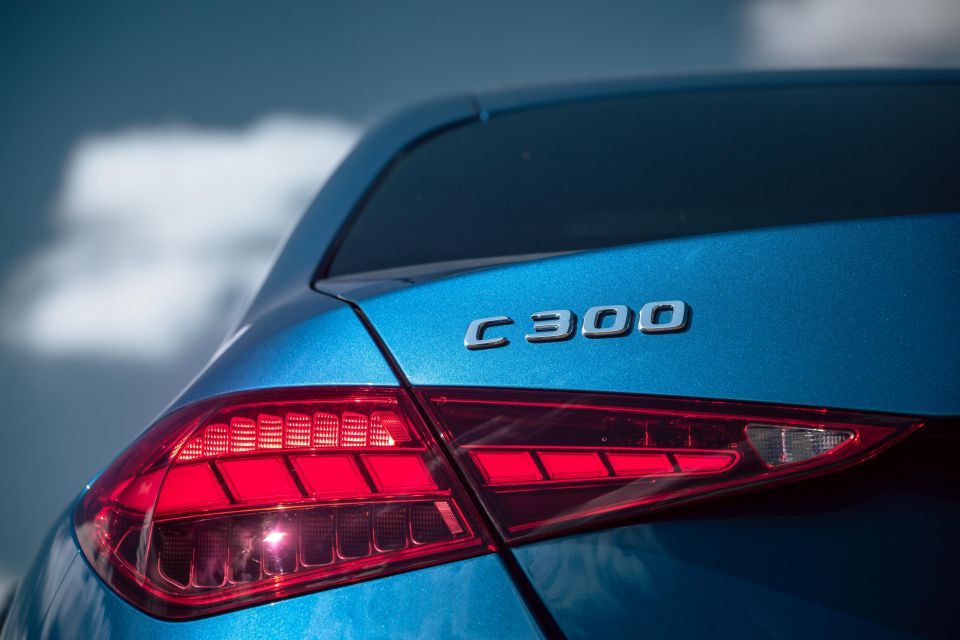
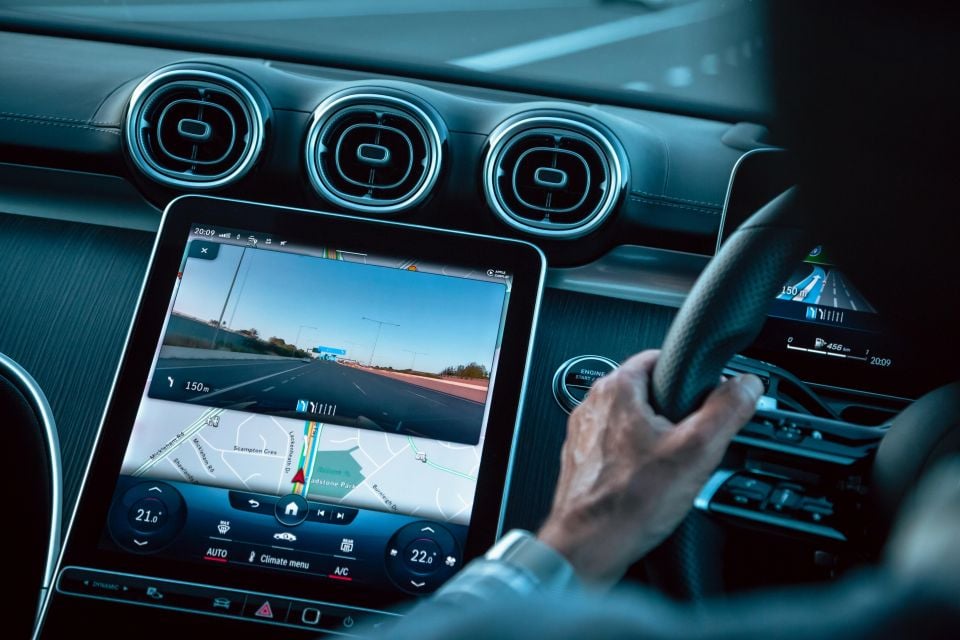
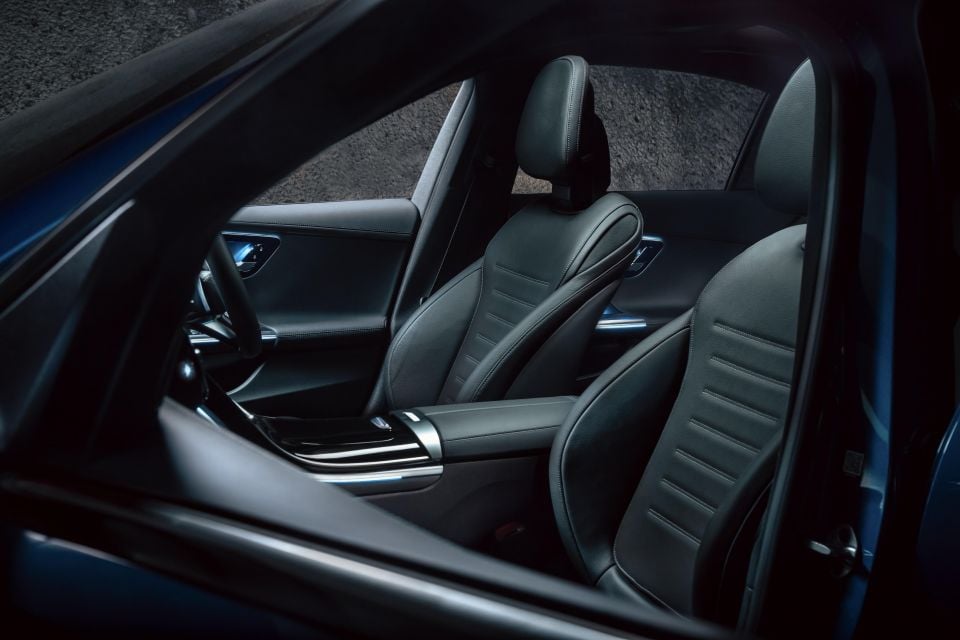
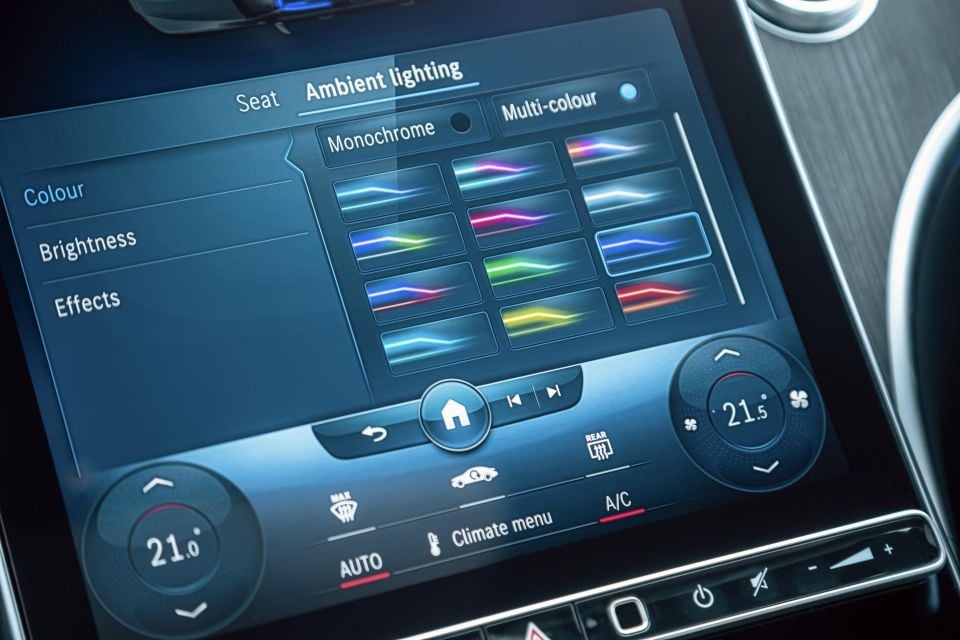
C300 adds:
Options include:
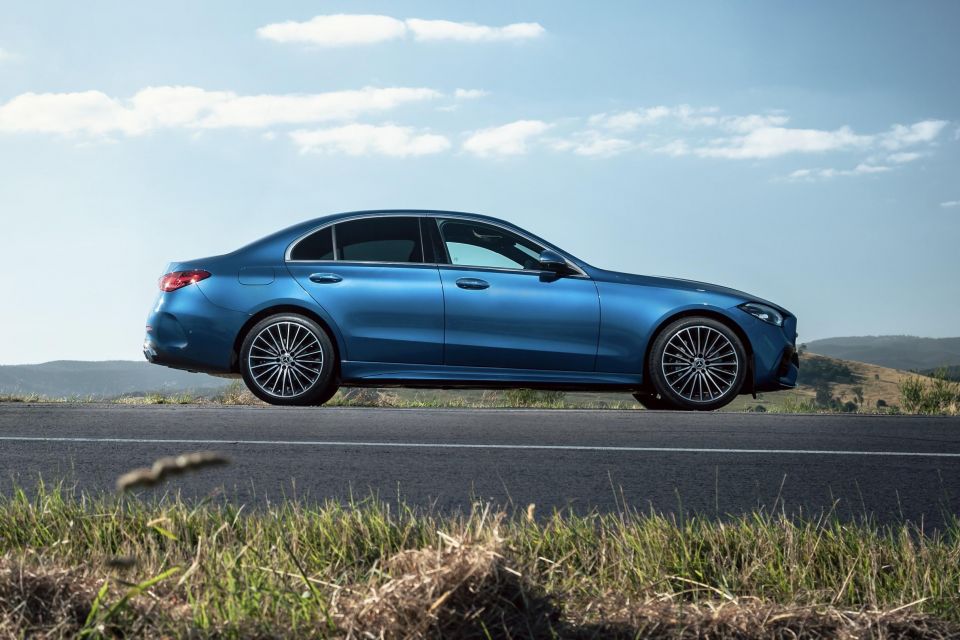
Exterior paint colours include:
Interior trim colour choices include:

The new-generation 2022 Mercedes-Benz C-Class has yet to be tested by ANCAP or Euro NCAP.
Standard C200 safety equipment includes:
The Driving Assistance Package Plus standard on the C300 adds:
It’s worth noting the base C200 comes with fewer driver-assist features despite its price increases.
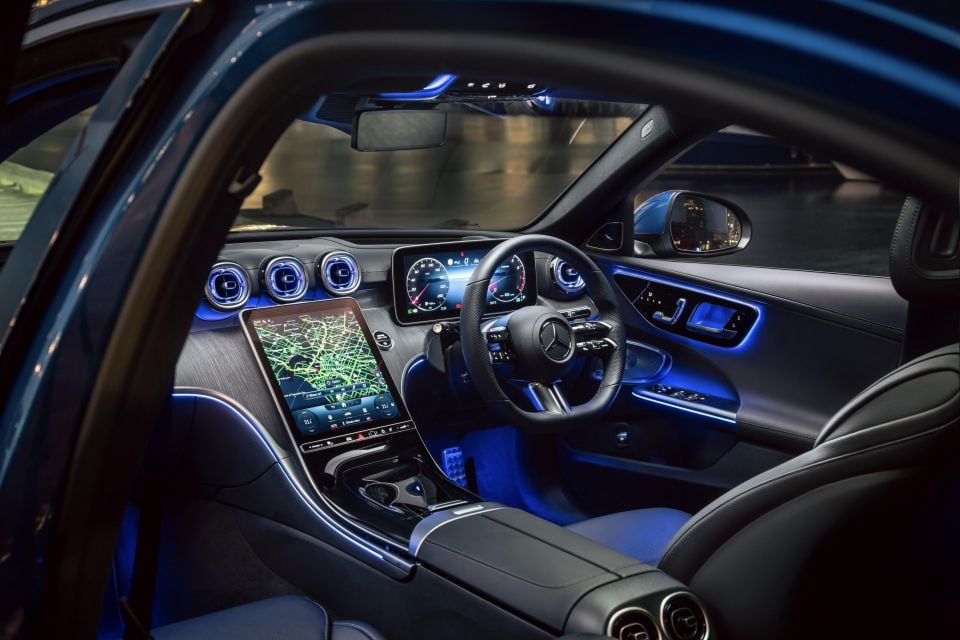
Screens, screens and more screens. Super-crisp and high quality, with smartphone-like processing as well. With these displays and the ambient colour options, it’s even more of a showstopper (and showroom heart-stealer) than the old model.
Once you settle into the nicely sculpted seats (Artico is a convincing leather alternative) with great headrests, you notice the new touch-sensitive seat controls in the door, next to the familiar Burmester silver speaker covers, beautiful switchgear, and sculpted plastics.
Small touches such as the click-clack, backlit, rounded-rectangular air vents add a feeling of tactility and substance to a largely digitised environment, as do the almost Italian-looking padded dash inserts with lovely stitchwork.
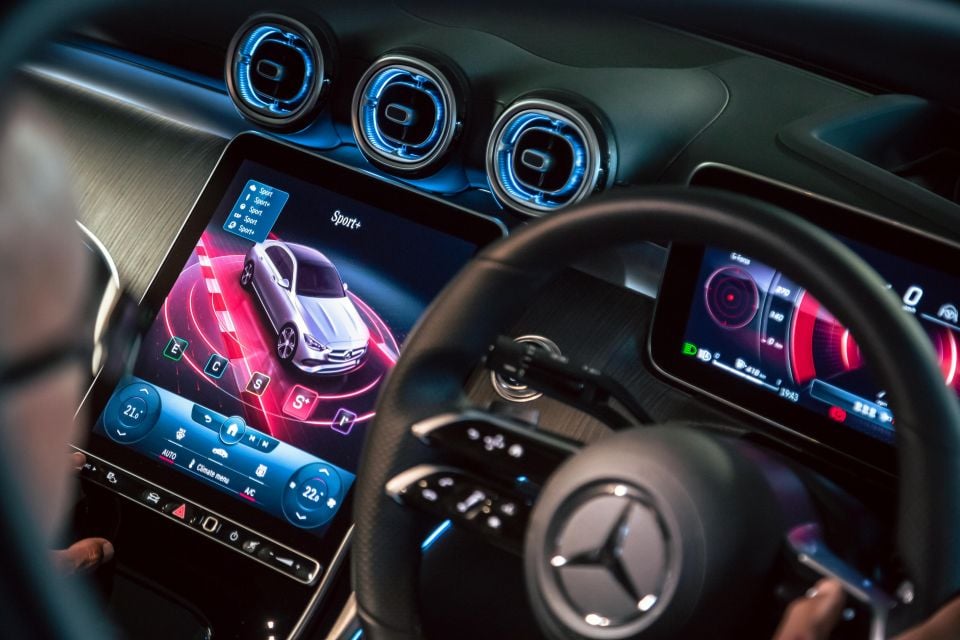
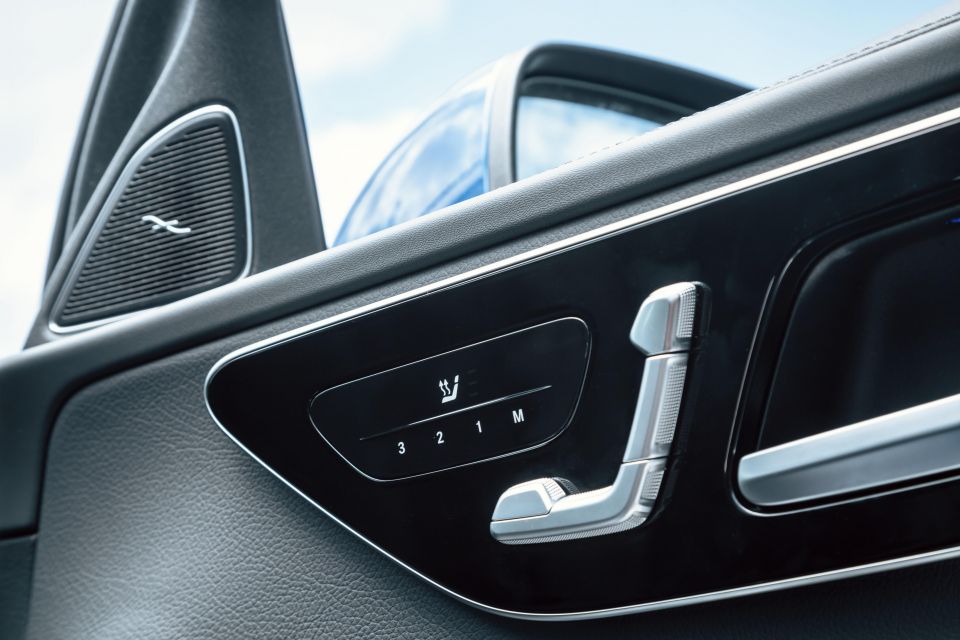

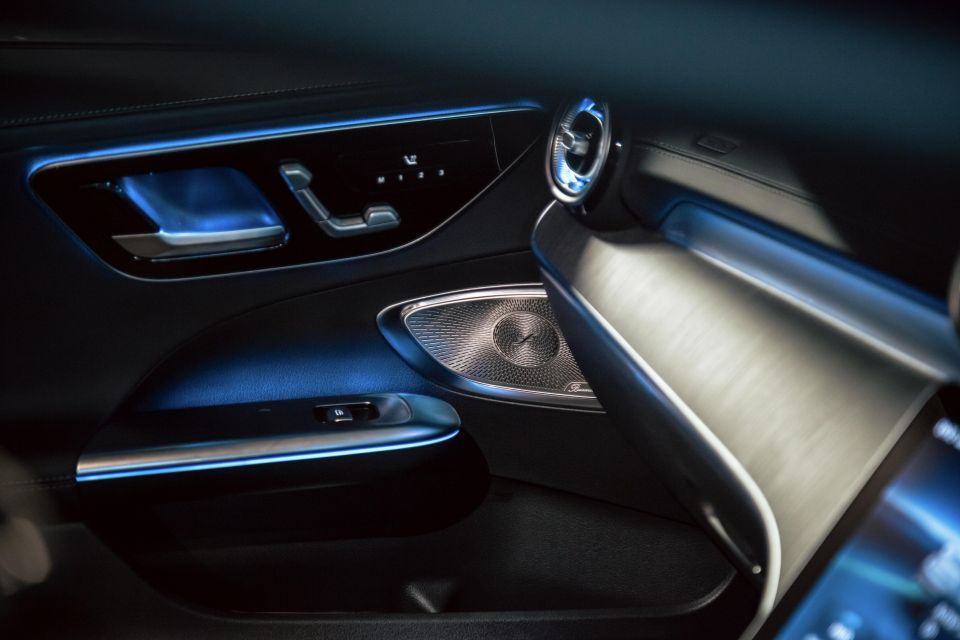
Various trims are available, with metal-weave inserts and various wood trims being nice, and glare-enhancing piano black less so. The ubiquitous latter is used extensively along the tunnel, fascia and wheel, and you’ll battle to convince me of its worth.
The electrically-adjustable steering wheel has the company’s new design, with two spokes per side, and slim stalks behind on the column for indicating and changing gears. The spokes each have their own bank of touchpads to control functions: for example to increase the volume of the audio you slide your thumb up and down.
I found these controls a little fiddly at first, to be honest, making it finicky to change the volume or cruise control settings. I had similar issues with the latest Volkswagen Touareg’s wheel. While I’m sure you adjust, I don’t see the great problem with normal buttons – do you?
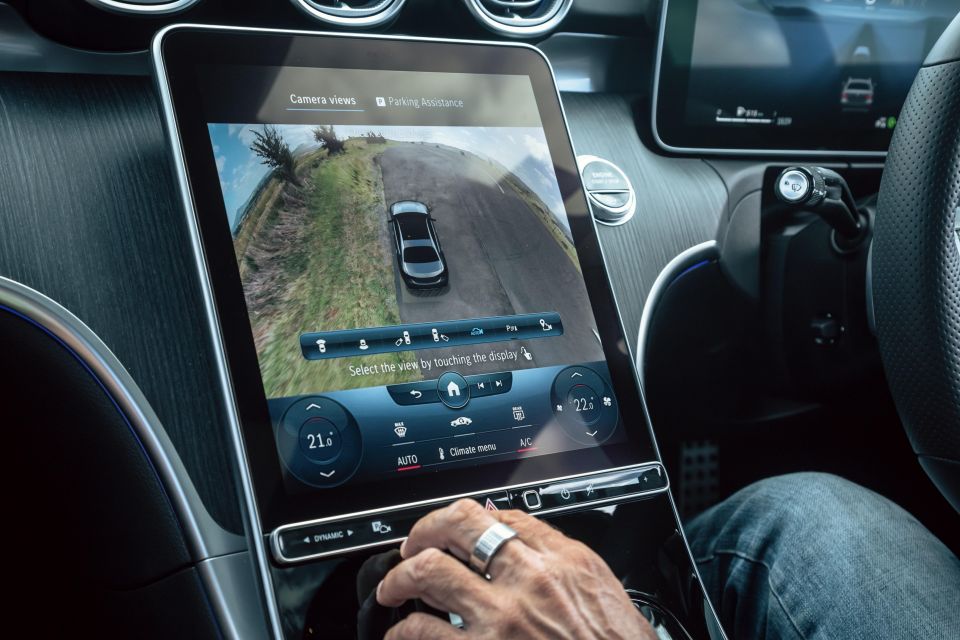
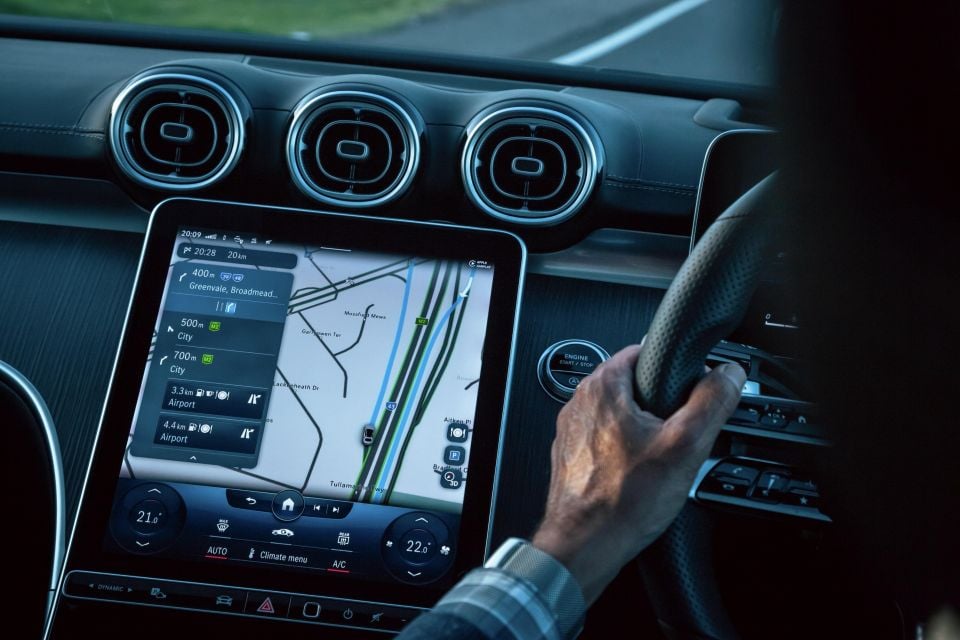
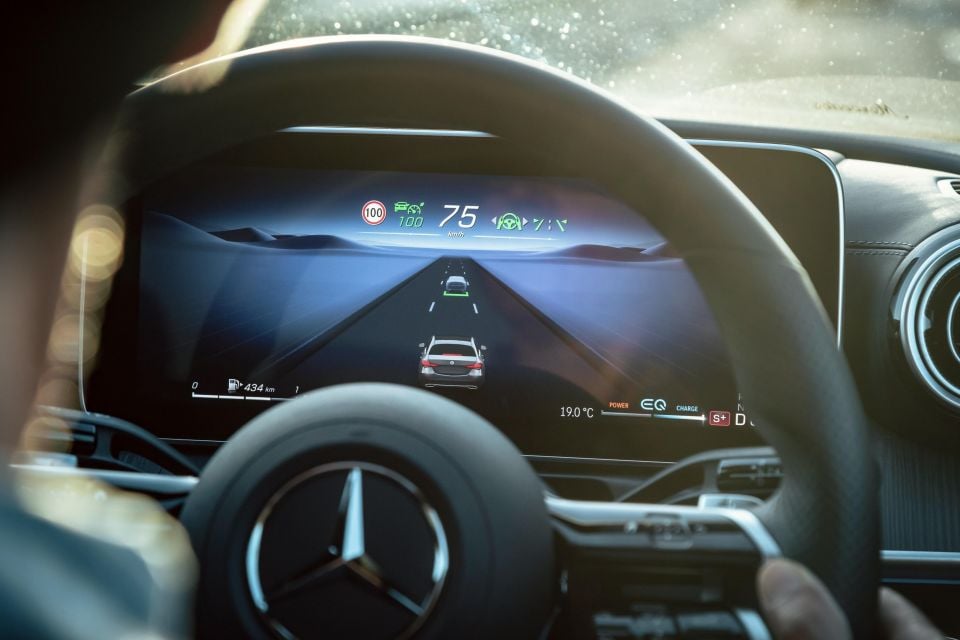
The portrait-oriented centre display is great for mapping, and the key ventilation controls always stay on the lower portion of the screen for easier access. There are copious menus to cycle through, accessible from large icons on the home page.
The instrument cluster is similarly slick, as controlled by the top-right wheel spoke. The appearance of the screens can be individualised with three display styles (Discreet, Sporty, Classic) and three modes (Navigation, Assistance, Service) – rather like the S-Class.
As well as having functions that are remotely controllable via the Mercedes Me app, a fingerprint scanner under the screen allows users to log into their own MBUX profile quickly.
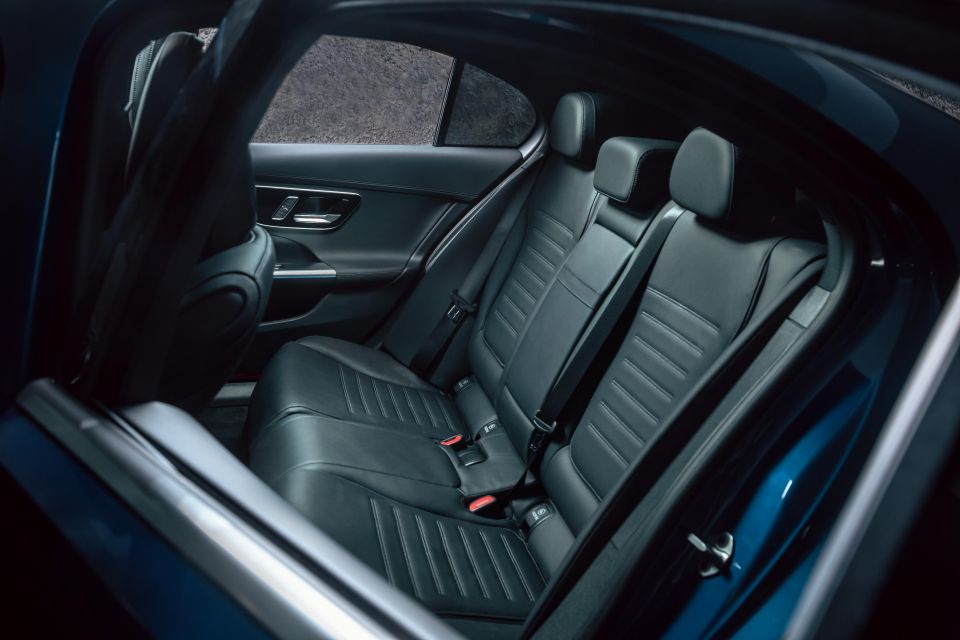
Storage solutions include good door bins, a split centre console, an opening section with cupholders under the centre screen, and a glovebox.
The new C-Class has an additional 25mm of wheelbase, improving headroom and knee-room in the rear. The sunroof hurts headroom, though my 194cm frame could still fit behind my driving position.
Rear amenities include vents, and access to USBs in the centre console. However, the boot capacity remains 455L, and with no wagon on the way, practicality has taken a backwards step.
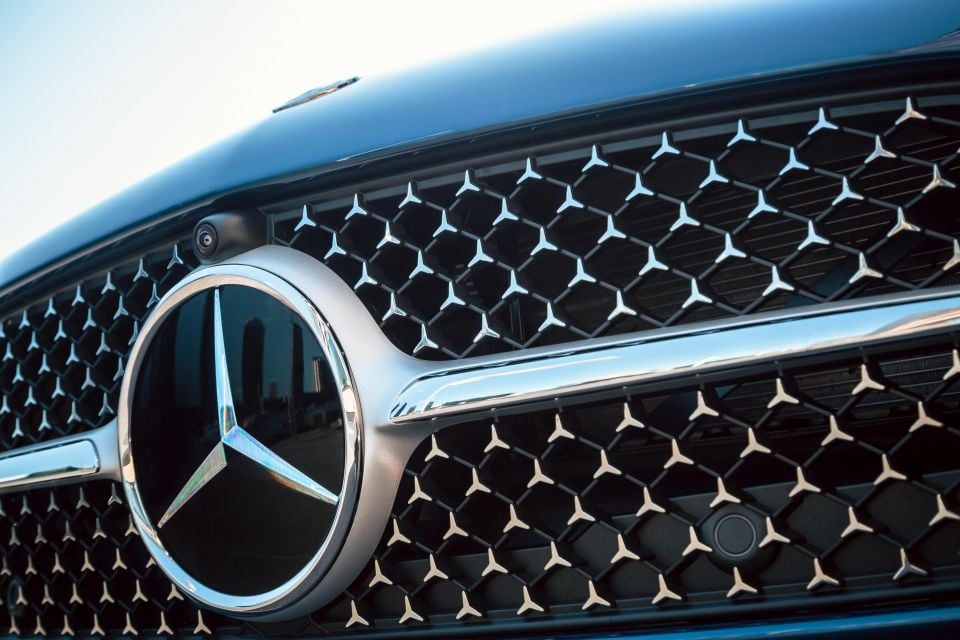
The base C200 uses a 1.5-litre turbo petrol engine making 150kW and 300Nm, helped by mild-hybrid assistance in the form of an integrated 15kW and 200Nm starter-generator using a 48V electrical system alongside the nine-speed automatic.
The ISG adds a little boost at low speeds, lets the engine shutoff when gliding, and engages stop/start when rolling to smooth out the car in traffic.
Mercedes-Benz quotes a 0-100km/h time of 7.3 seconds, a top speed of 246km/h, and fuel consumption on the combined cycle of 6.9 litres per 100km.
Meanwhile the C300 uses a 2.0-litre petrol-turbo with the same engine code as the C200 (M254), making 190kW and 400Nm – plus a quick 20kW on overboost – alongside the ISG and 48V system.
This setup uses a smidgen more fuel on the combined cycle, at 7.3L/100km, but it cuts the 0-100km/h time to a sprightly 6.0 seconds.
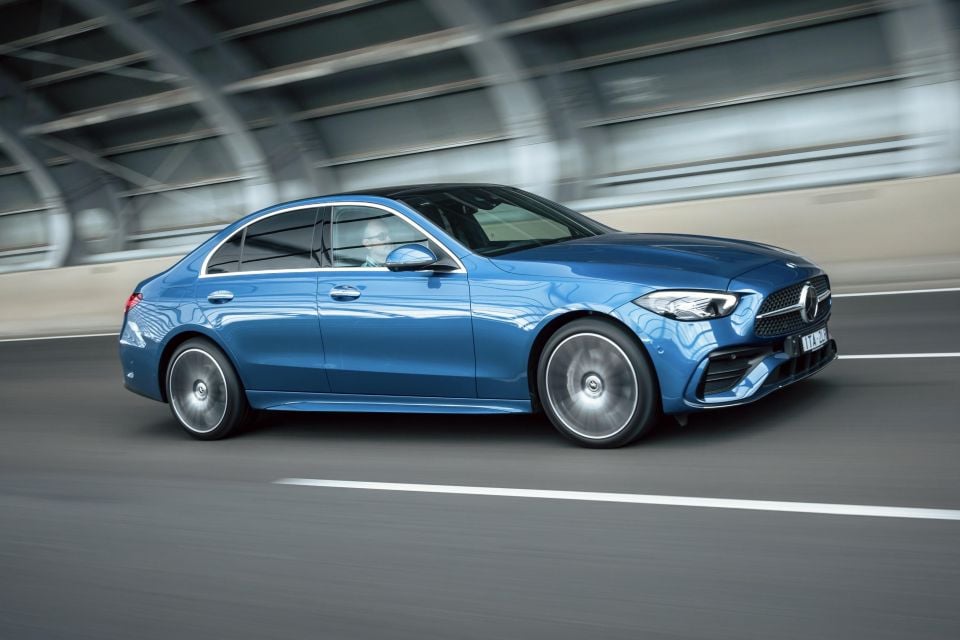
The new C-Class migrates to the latest ‘MRA’ platform, and shares a heck of a lot with the S-Class. Over the old car it has a new four-link front axle and five-link rear mounted to a subframe.
Passive dampers come standard, with active dampers to be made available in a package – albeit one that’s currently not available due to chip shortages.
The same package adds rear-wheel steering which turns the back wheels the opposite way to the fronts at low speeds, and the same at speeds above 60km/h, thereby shaving 43cm from the turning circle and enhancing higher-speed stability.
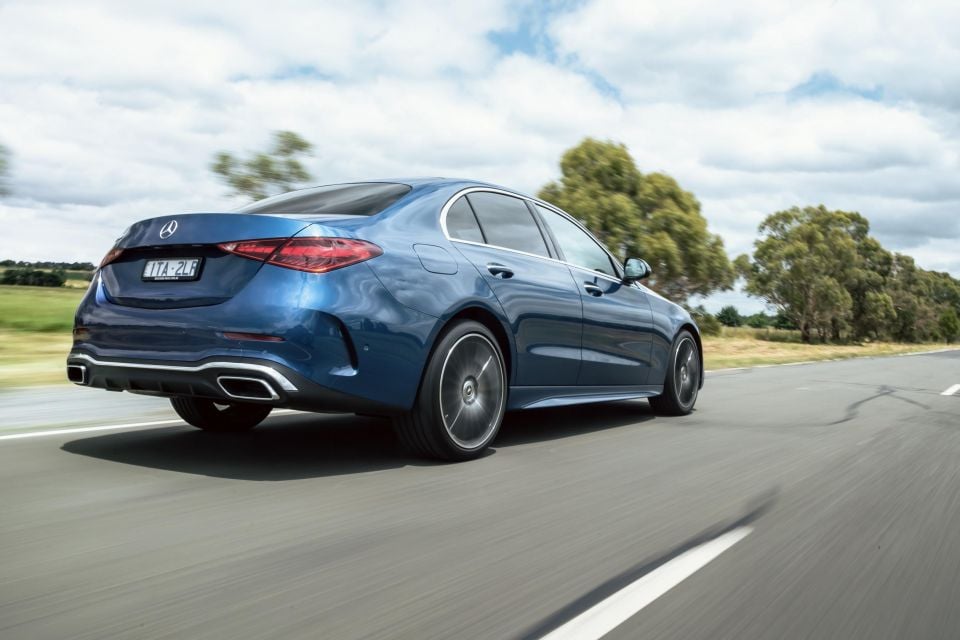
Where expert car reviews meet expert car buying – CarExpert gives you trusted advice, personalised service and real savings on your next new car.
The thing that really stood out on the launch was the excellent noise, vibration and harshness suppression, with the interior feeling tranquil and relaxing even over some classic coarse-chip Aussie back roads. Many European luxury cars utterly fail this test, but not the new C-Class.
The electric power steering’s default is low-resistance but syncs to the driving mode selector alongside ESP, throttle and transmission shift points, plus the dampers where applicable. You control all these via a slick home screen menu, with button shortcuts.
Even on 19-inch wheels the ride quality felt relatively good (on roads of MB’s choosing), and we drove both damper choices since a few early-build cars with the Engineering Package have landed. Neither struck me as excessively firm.
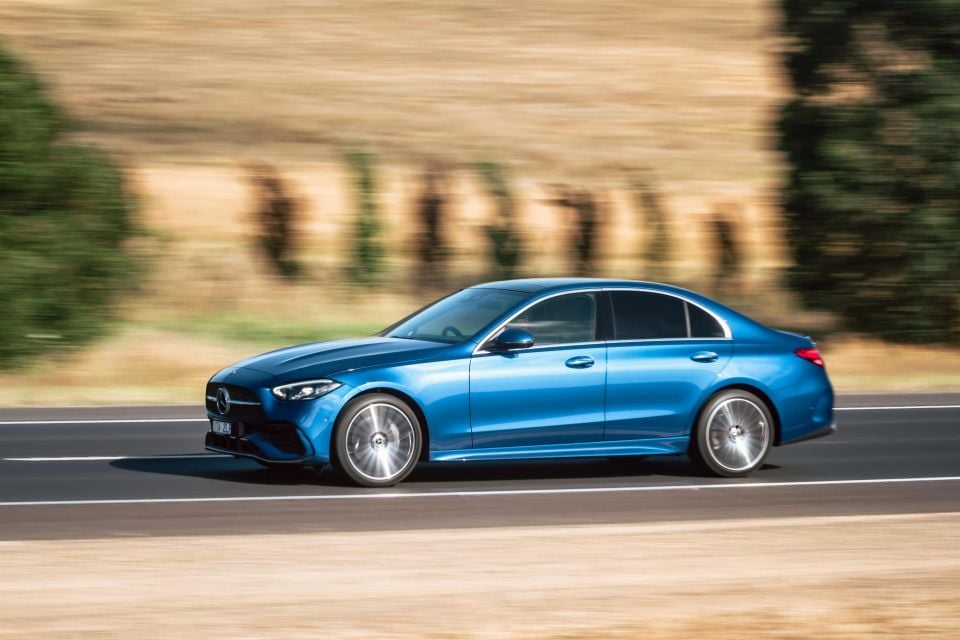
While the new C-Class can’t match a BMW 3 Series when it comes to sports-car feel and corner-carving, it delivers on areas like refinement and comfort pretty well, taming floatiness while imparting a sense of calmness.
The best part about both mild-hybrid engines is again the refinement, with the stop/start systems almost imperceptible, and the engine shutting off at high speeds (and times of low-resistance) quite frequently. Any major torque hole down low felt filled-in too.
The C200 felt sprightly enough, but stepping into the C300 certainly brought about a little greater rolling response. That said, you’re expected to pay a decent premium for it…
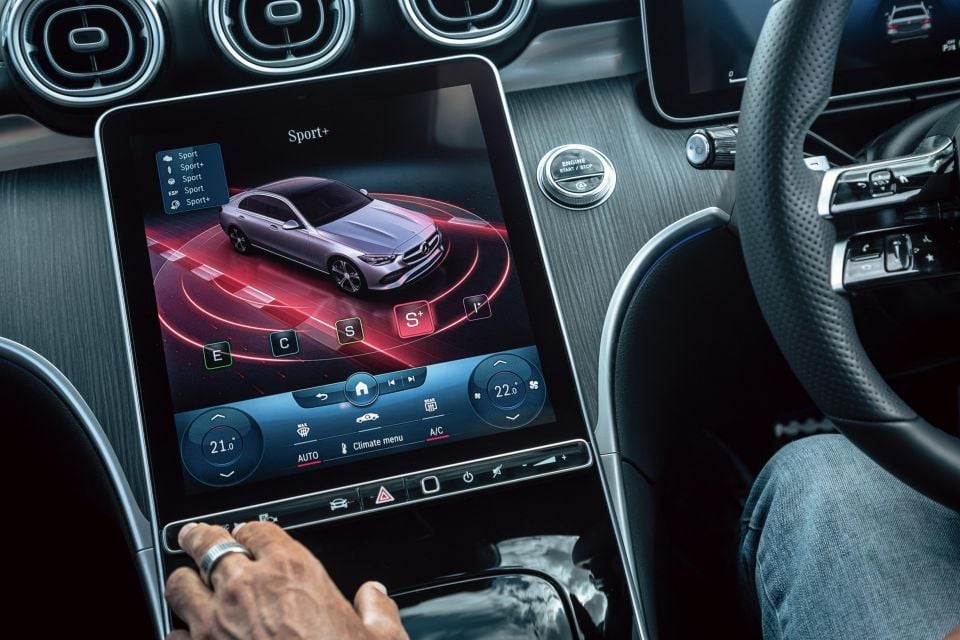
The car is also very good at helping you keep your eyes where they belong, with a ton of different setting and menus to cycle through on your instruments (including maps and driver-assist status guides), and the voice control system lets you handle many functions from changing the cabin temperature through to opening the sunroof.
The driver-assist systems all felt pretty effective on highways, though the fact you have to buy the C300 for the expanded suite of level two autonomous functions is worth noting.
We kicked Polestar for doing the same, so fair is fair.
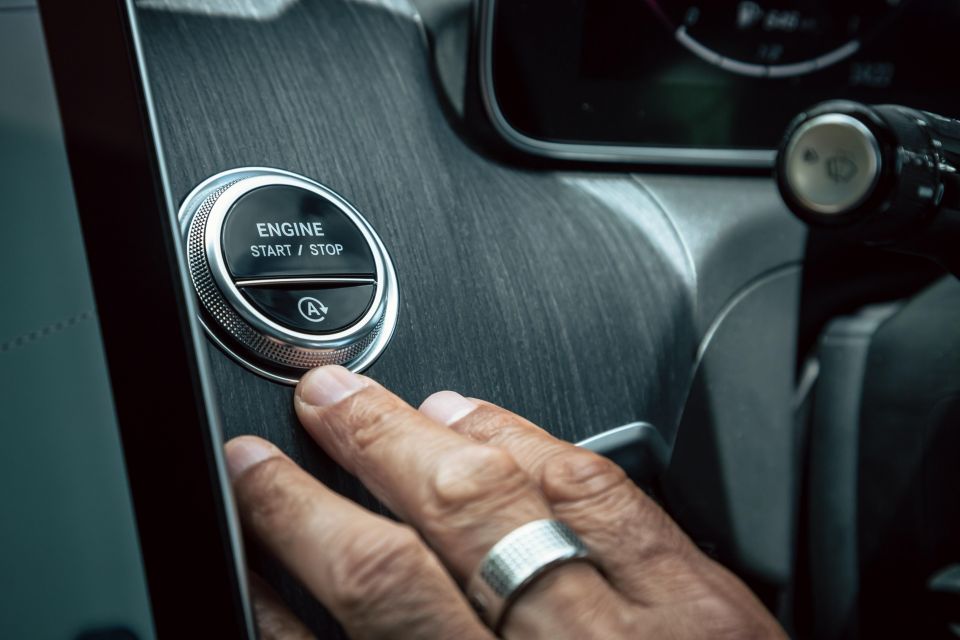
All 2022 Mercedes-Benz C-Class models are covered by a five-year, unlimited kilometre warranty.
Mercedes-Benz offers a three-, four- and five-year servicing plan for the C-Class and service intervals are 12 months or 25,000km – whichever comes first.
Pricing for the service plans are as follows:
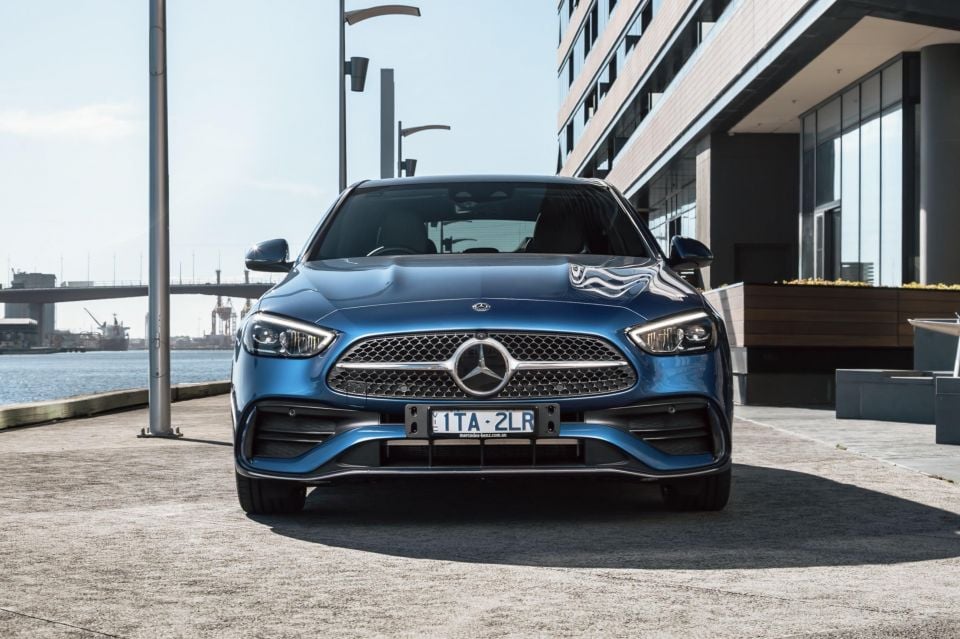
The prices are up, but the C-Class feels more like a baby S than ever.
In terms of interior displays, finishes, ride comfort, refinement, and subtle-yet-elegant design, it remains a class leader.
If you’ve been waiting to upgrade your W205 for a W206, there isn’t a heap to disappoint you – lack of wagon and new price positioning aside.
We’re also eagerly awaiting the eventual long-range plug-in hybrid, and Mercedes-AMG C43 and C63 derivatives to drop, to fill out the range. We’ll bring you more reviews on the line-up, soon, with video.
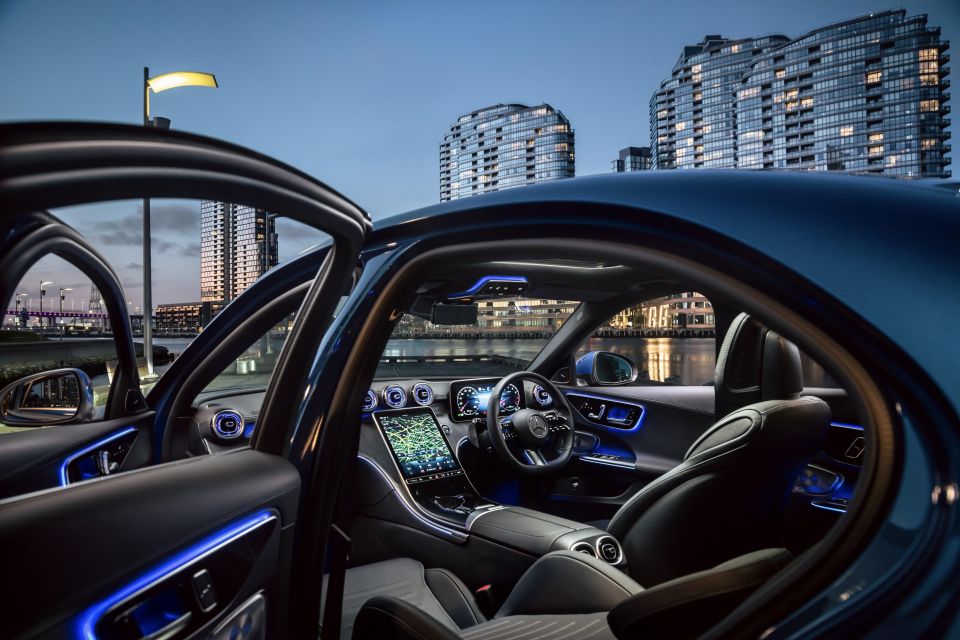
Click the images for the full gallery
Where expert car reviews meet expert car buying – CarExpert gives you trusted advice, personalised service and real savings on your next new car.


Derek Fung
2 Days Ago


Damion Smy
3 Days Ago
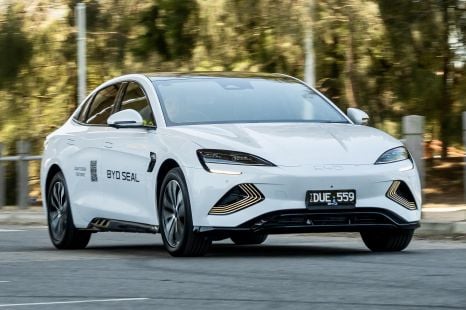

Max Davies
7 Days Ago
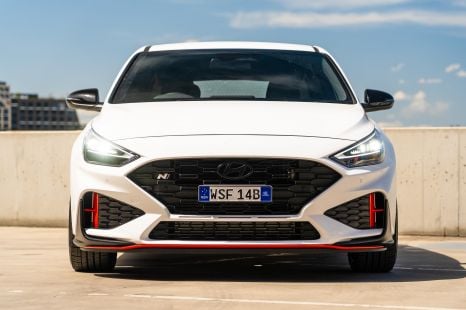

William Stopford
14 Days Ago
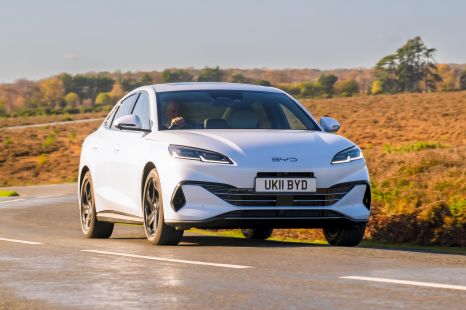

Matt Robinson
16 Days Ago
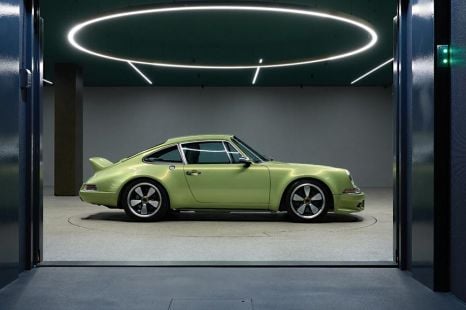

Marton Pettendy
18 Days Ago